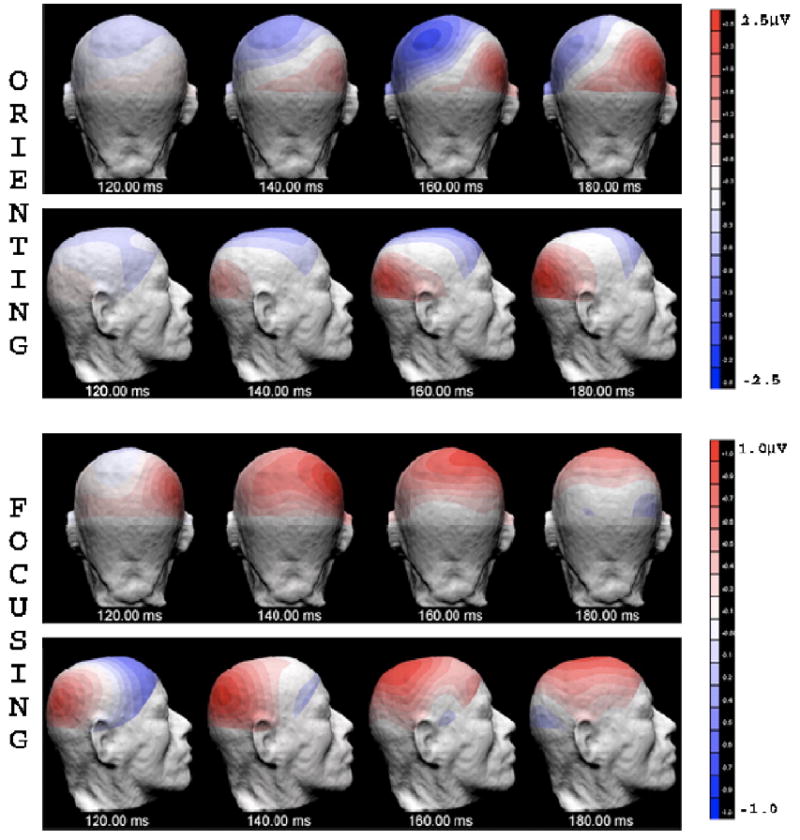Fig. 7.

The 3D scalp voltage distribution of the orienting-related ERP (cue validity effect, obtained by subtracting ERPs of the invalid condition from ERPs of the valid condition), and the focusing-related ERP components (cue size effect, obtained by subtracting ERPs of the large valid cue condition from ERPs of the small valid cue condition), when the target array appeared in the left visual field. Data for orienting were averaged across small cue and large cue conditions. Only the ERPs of valid trials for the small and large cue conditions were used regarding the subtraction for focusing-related component. Data are shown in back view and right view of the head, every 20 ms from 120 to 180 ms after the onset of search array. Note that the focusing-related ERP had a more dorsal distribution as compared with a more ventral distribution of the orienting-related ERP at 140 ms (the P1 time range).
